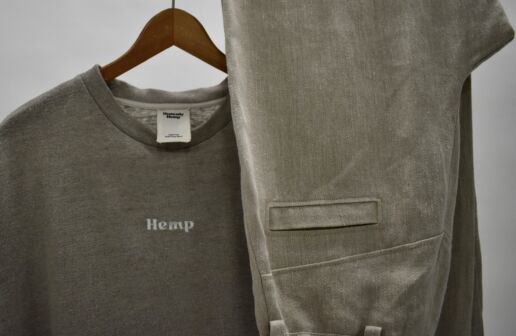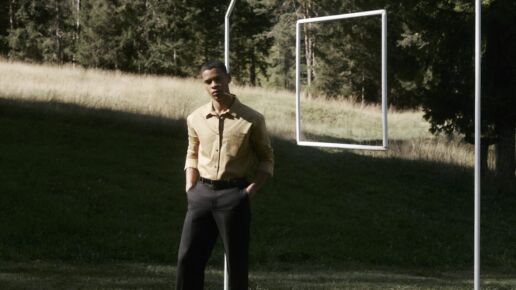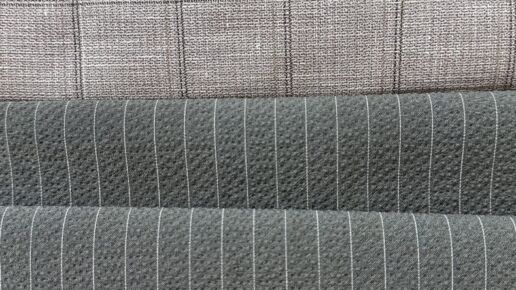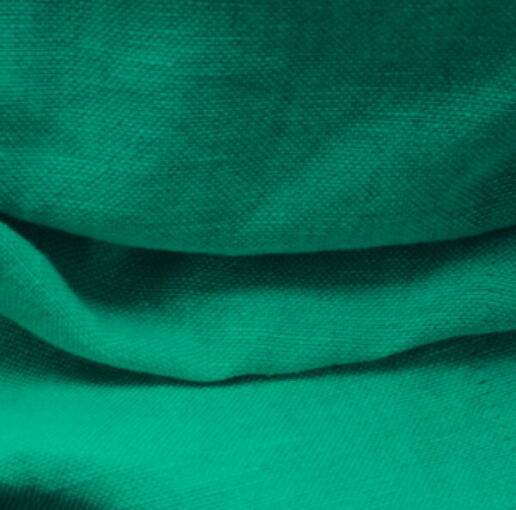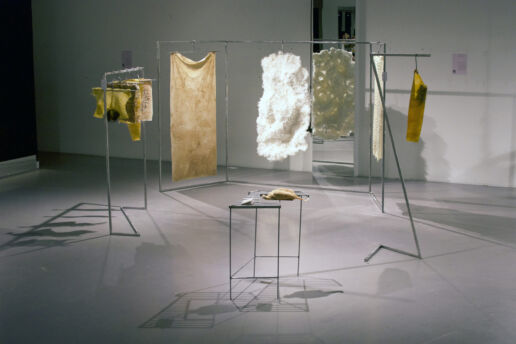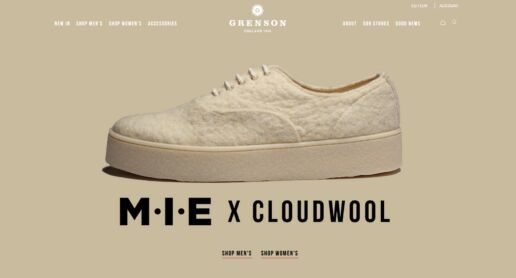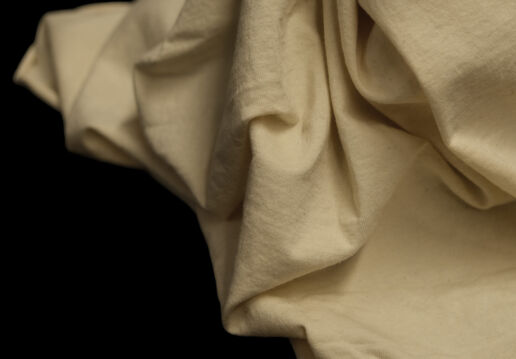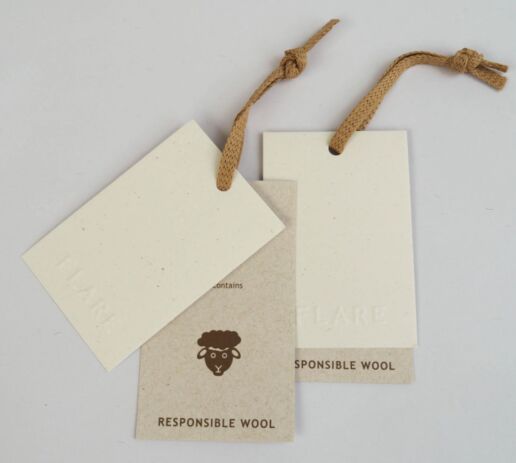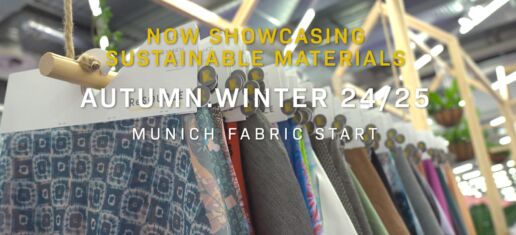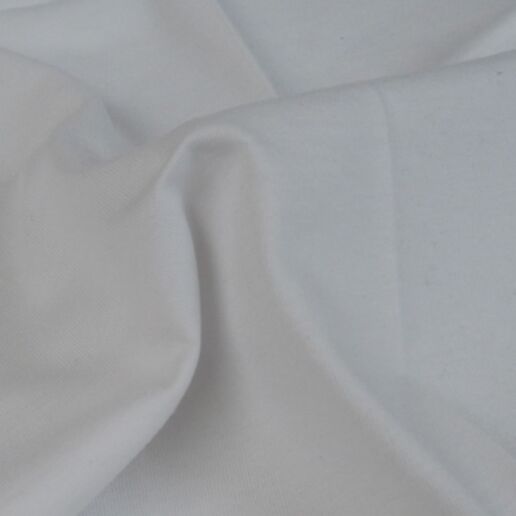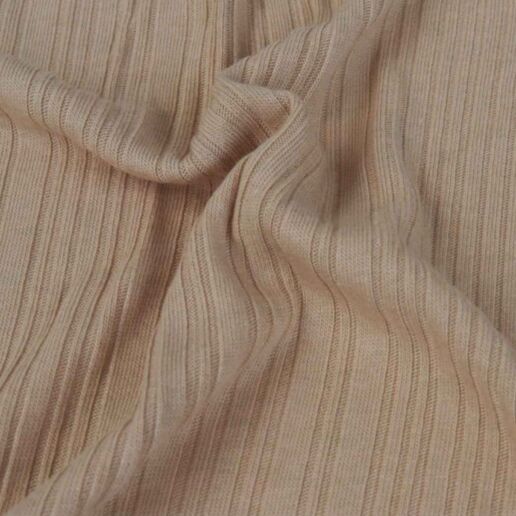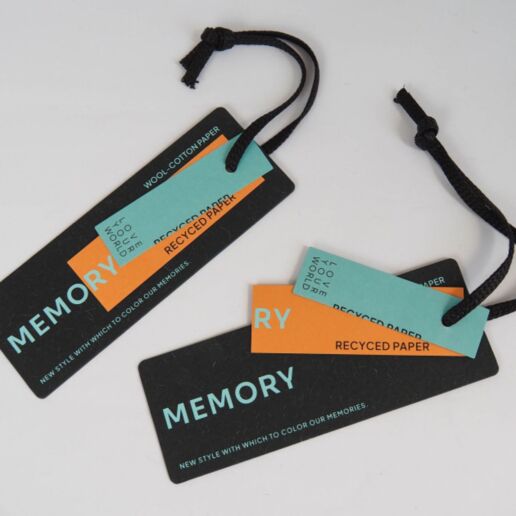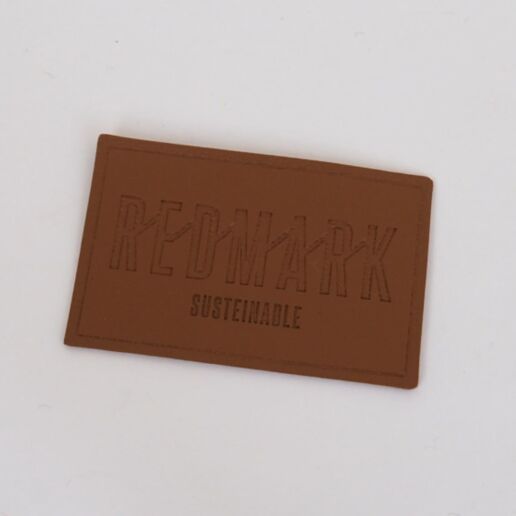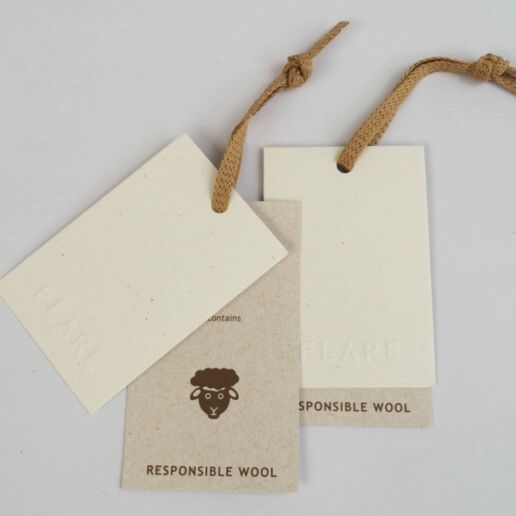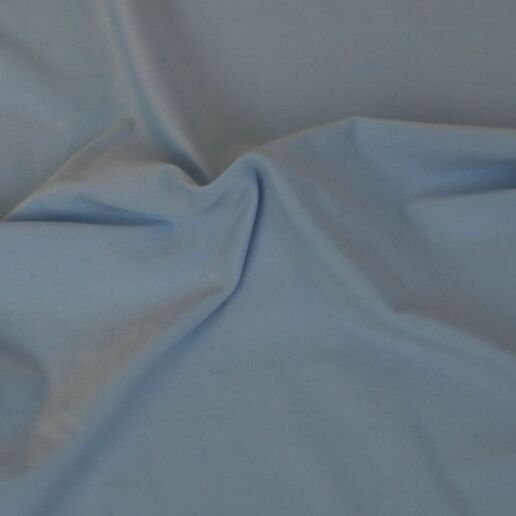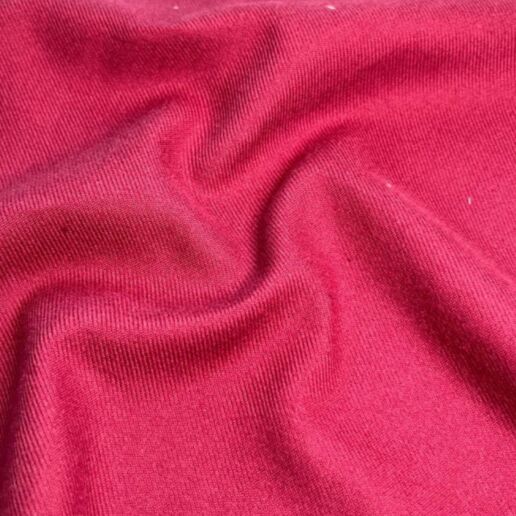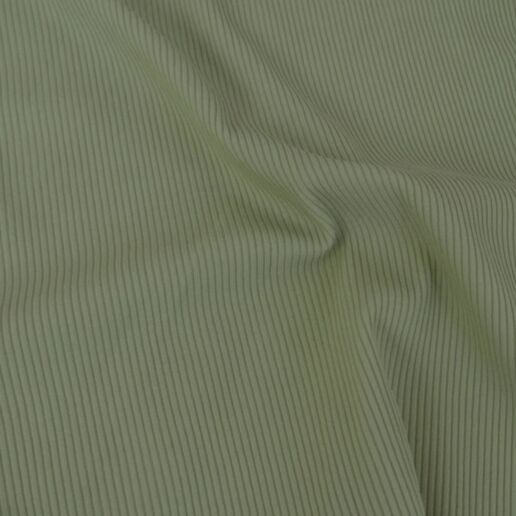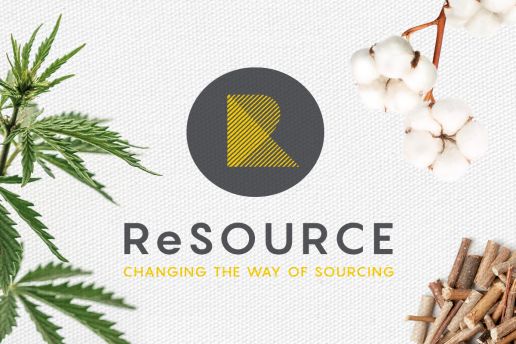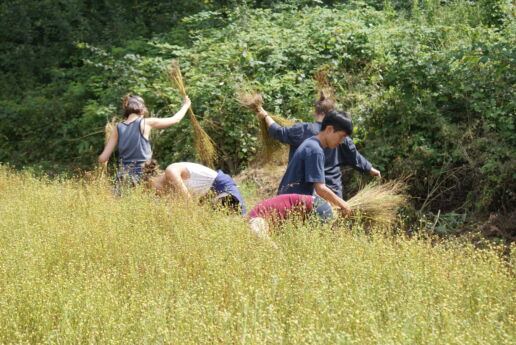Fashion
Honestly Hemp - Sustainable Innovations
Hemp: a truly versatile plant, once one of the main sources of man-made textiles. Today, most of us know it under the names “cannabis” or “marijuana”, which tend to evoke predominantly negative connotations. Design Academy Eindhoven alumna Natasha Amisha sought to investigate the source of this disconnect with her graduate project “Honestly Hemp”. Her vision: to create an entire outfit made wholly from hemp fibre and end the stigma surrounding the plant.
Natasha soon discovered that our tainted view of the hemp plant is mainly based on misconceptions, and that it could be a key ingredient in helping the textile industry become more sustainable. Not only is hemp a robust plant that thrives in diverse conditions, it also requires minimal water, is among nature’s strongest fibers, thus ensuring long-lasting life cycles, boosts sustainable agriculture as it enhances soil quality and is antibacterial, UV resistant and hypoallergenic. With “Honestly Hemp”, she has set out to place this fascinating natural material at the forefront of sustainable solutions for the future of the textile industry.
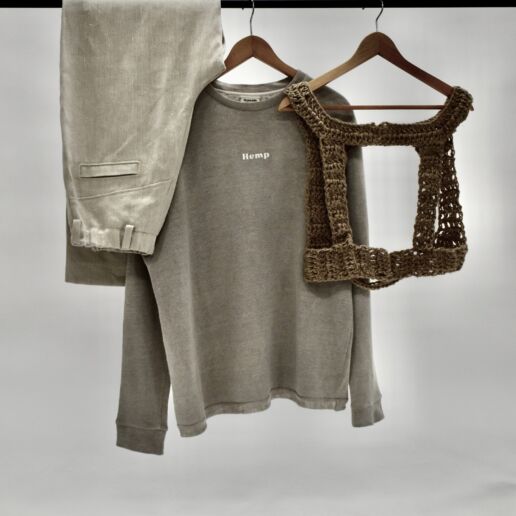
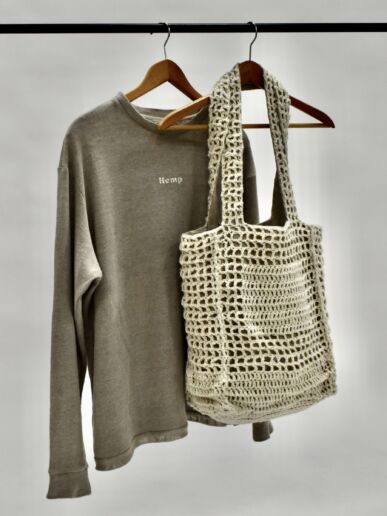
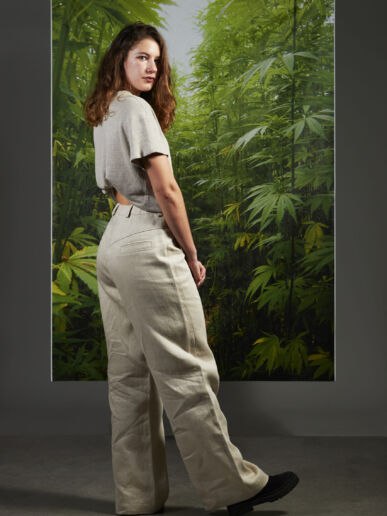
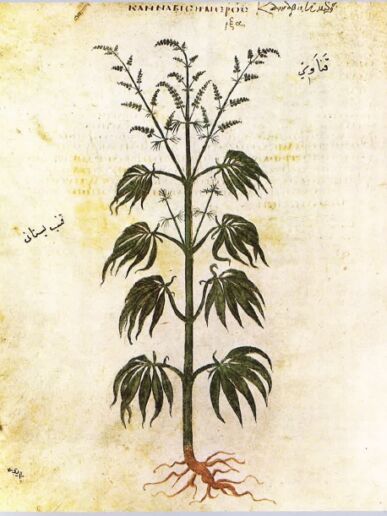
———————————————————————–
THIS MIGHT BE ALSO INTERESTING FOR YOU
BLUEZONE Signature Spring.Summer 25 – Part III
23. April 2024
The aim is to showcase not only the Japanese heritage ofthe ancient hand-stitch technique but also to raise awareness about the significance of repairing and repurposing clothing.
Fabric Trends Spring.Summer 25 – Part VI
18. April 2024
With a rich legacy and a focus on sustainability, they offer a diverse range of ecofriendly fabrics like Modal, Tencel, Linen, Organic and Regenagri Cotton. Their commitment to quality meets the latest fashion trends through innovative designs.
The latest accessory developments for Spring.Summer 25 – Part III
16. April 2024
With new recycled materials and innovative dyeing techniques, they create environmentally friendly designs. Organic polyester gives additional sustainability, while customised designs emphasise personal style.
BioBase - Sustainable innovations
BIOBASE, a central project within the BIOTEXFUTURE cluster, introduces sustainable alternatives from available resources for textile applications with competitive costs and properties. The overarching BIOTEXFUTURE project, led by the Institute for Textile Technology at RWTH Aachen (ITA), the Chair for Technology and Organizational Sociology (STO) at RWTH Aachen, and sportswear manufacturer adidas, aims for the transition of the entire textile value
chain to biobased materials.
BIOBASE is motivated by the challenge of dependence on fossil raw materials in the production of synthetic polymers, which poses ecological, economic, and political risks. The project targets the establishment of biobased polymers in the textile industry, demonstrating their full potential. Key sectors of the German textile industry, including automotive, sportswear, interiors, and technical textiles, are the focal points.
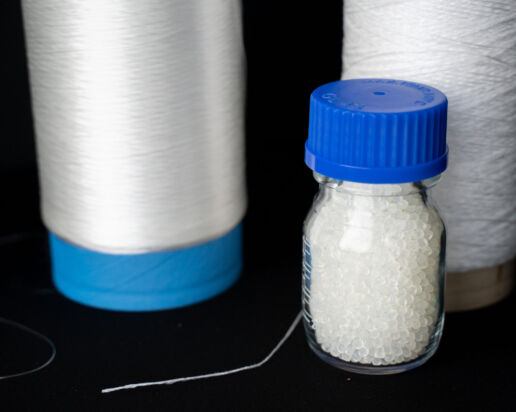
Within the BIOBASE project, the entire textile value chain of selected products is traversed. By gradually increasing the technological maturity level from Technology Readiness Level (TRL) 4 to TRL 6–7, the industrial production of biobased and sustainable man-made fibers is advanced. Polymers, yarns, and textile surfaces are developed based on applications, considering technical requirements of the industries.
The collaboration between research institutions and industrial partners allows the creation of industrially produced demonstrators, unfolding a beacon effect for the German bioeconomy and showcasing the potential of biobased polymers available in the market. The project also identifies further research and development potential for the BIOTEXFUTURE innovation area, which can be implemented in subsequent sub-projects.
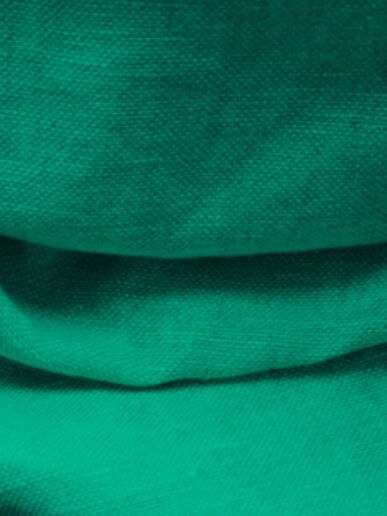
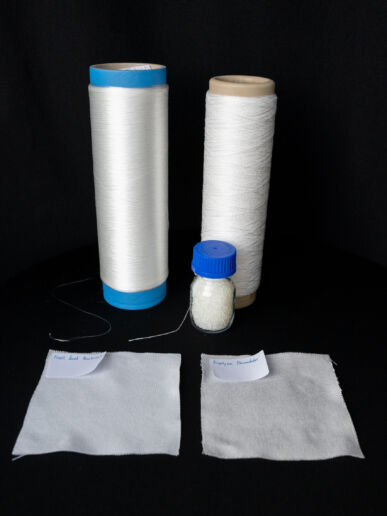
———————————————————————–
THIS MIGHT BE ALSO INTERESTING FOR YOU
BLUEZONE Signature Spring.Summer 25 – Part III
23. April 2024
The aim is to showcase not only the Japanese heritage ofthe ancient hand-stitch technique but also to raise awareness about the significance of repairing and repurposing clothing.
Fabric Trends Spring.Summer 25 – Part VI
18. April 2024
With a rich legacy and a focus on sustainability, they offer a diverse range of ecofriendly fabrics like Modal, Tencel, Linen, Organic and Regenagri Cotton. Their commitment to quality meets the latest fashion trends through innovative designs.
The latest accessory developments for Spring.Summer 25 – Part III
16. April 2024
With new recycled materials and innovative dyeing techniques, they create environmentally friendly designs. Organic polyester gives additional sustainability, while customised designs emphasise personal style.
Blooming Minds - Sustainable Innovations
Elizabeth Balado is an artist, designer, and researcher from London, presenting a unique, experientially-driven workshop with her project “Blooming Minds: Social Printing”. Developed over the past year, the workshop combines the psychological and physical benefits of nature with community-based creation, by guiding participants to create their own prints. The workshop encourages participants to follow their own intuition to select and forage flowers and plants and then arrange a composition, before using a technique to transfer the natural dye onto cotton using a mallet.
She will be presenting a variation of the workshop at the KEYHOUSE during Munich Fabric Start, which will consist of participants applying the print technique onto tote bags, allowing them to create and keep their own work. Elizabeth’s research focuses on combining nature – especially the use of natural and recycled materials – and community, a social practice which weaves themes such as mental health while encouraging accessible creativity. Her current work can be found on her Instagram and website. Elizabeth is open to collaboration with foragers, biologists, mental health services and others interested about participating in further printing workshops.
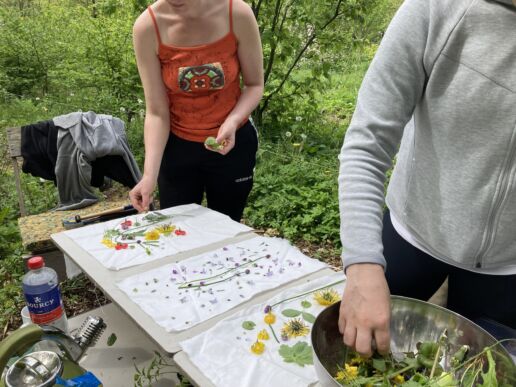
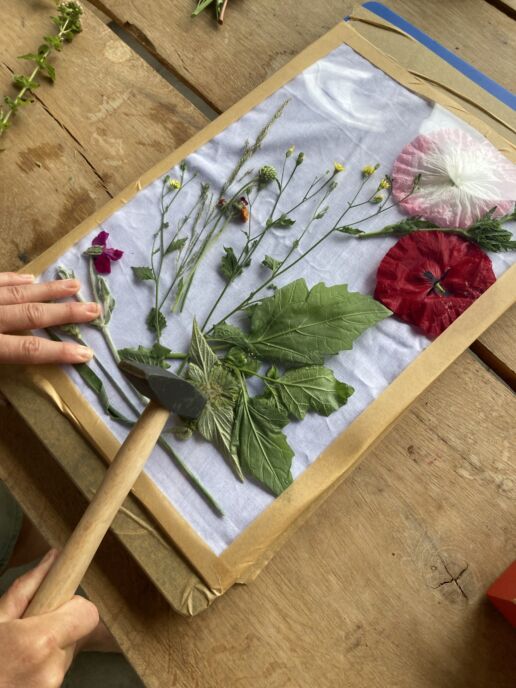
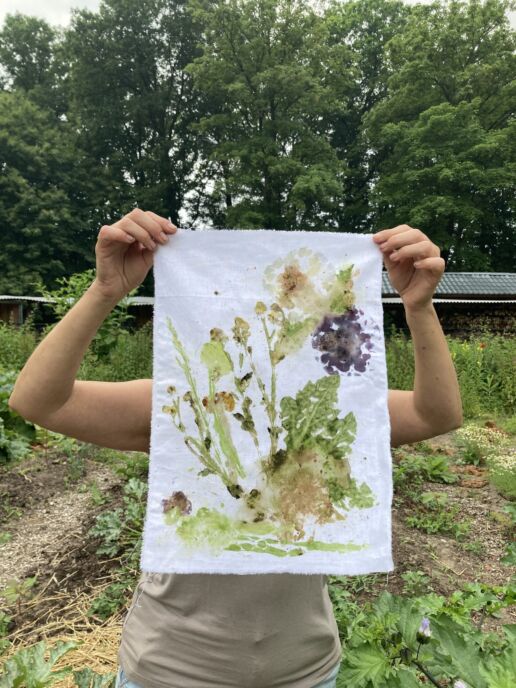

———————————————————————–
THIS MIGHT BE ALSO INTERESTING FOR YOU
BLUEZONE Signature Spring.Summer 25 – Part III
23. April 2024
The aim is to showcase not only the Japanese heritage ofthe ancient hand-stitch technique but also to raise awareness about the significance of repairing and repurposing clothing.
Fabric Trends Spring.Summer 25 – Part VI
18. April 2024
With a rich legacy and a focus on sustainability, they offer a diverse range of ecofriendly fabrics like Modal, Tencel, Linen, Organic and Regenagri Cotton. Their commitment to quality meets the latest fashion trends through innovative designs.
The latest accessory developments for Spring.Summer 25 – Part III
16. April 2024
With new recycled materials and innovative dyeing techniques, they create environmentally friendly designs. Organic polyester gives additional sustainability, while customised designs emphasise personal style.
Being Plucked - Sustainable Innovations
Suzanne Corcessin’s “Being Plucked” (“Être à Fleur de Peau”) utilizes unconventional textiles to argue against the notion that bird plucking and hair removal are neutral actions. Suzanne Corcessin views these acts as political, maintaining colonial and gendered hierarchies. Through bird plucking and the aesthetics of hair removal, bodies historically have been controlled and objectified.
The installation employs latex, textiles, silicone, and feathers to create textures that confront viewers with conflicting emotions, provoking new perspectives on the debate over hair removal. In this everyday decision and product debate, the question arises: Who decides what is right or wrong, beautiful or unattractive?
“Being Plucked” questions underlying assumptions and illuminates the political dimensions of decisions about one’s body. By creating textiles that evoke discomfort, Suzanne Corcessin urges a shift in the perception of the act of hair removal, breaking through the colonial and gendered structures often associated with this topic.
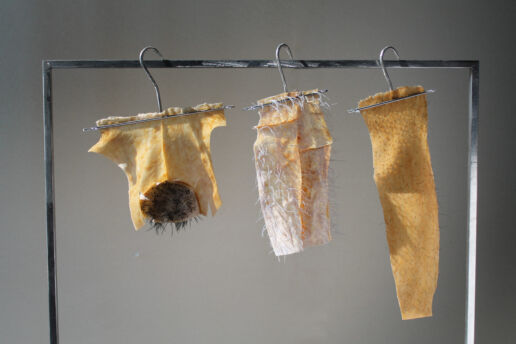
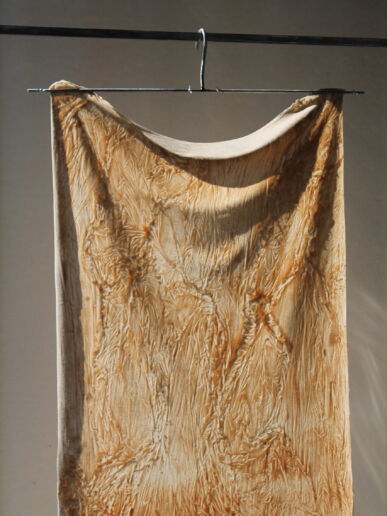
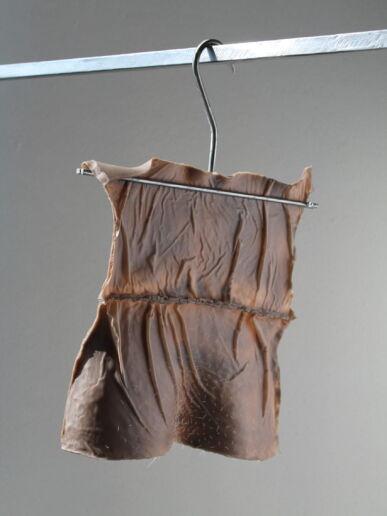
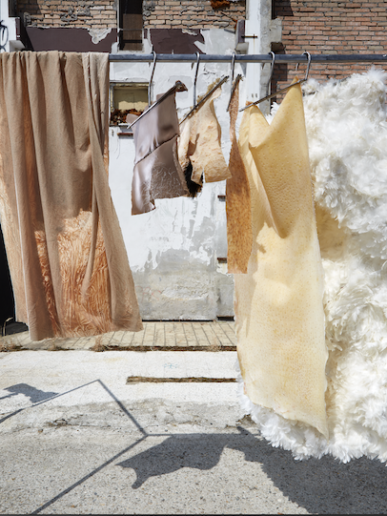
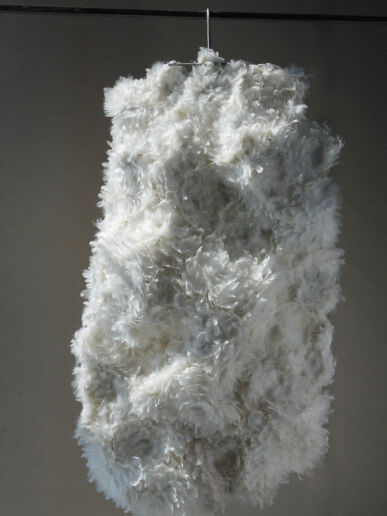
———————————————————————–
THIS MIGHT BE ALSO INTERESTING FOR YOU
BLUEZONE Signature Spring.Summer 25 – Part III
23. April 2024
The aim is to showcase not only the Japanese heritage ofthe ancient hand-stitch technique but also to raise awareness about the significance of repairing and repurposing clothing.
Fabric Trends Spring.Summer 25 – Part VI
18. April 2024
With a rich legacy and a focus on sustainability, they offer a diverse range of ecofriendly fabrics like Modal, Tencel, Linen, Organic and Regenagri Cotton. Their commitment to quality meets the latest fashion trends through innovative designs.
The latest accessory developments for Spring.Summer 25 – Part III
16. April 2024
With new recycled materials and innovative dyeing techniques, they create environmentally friendly designs. Organic polyester gives additional sustainability, while customised designs emphasise personal style.
Revoltech - Sustainable Innovations
Lucas Fuhrmann, the visionary behind Revoltech, inaugurates a transformative era of presentation technology that amalgamates nature, technology, and sustainability. Through innovative light columns, he creates unique experiences that not only impress aesthetically but also underscore Revoltech’s
commitment to transparency and eco-friendliness.
The revolution of Revoltech lies in the use of Hemp-Leder, an advanced fusion of hemp fibers and traditional leather. This sustainable material choice reflects Revoltech’s endeavor to promote environmentally friendly and ethical practices. The physical location of Revoltech at Darmstadt, is not just a hub of progress but also a symbol of innovation and design.
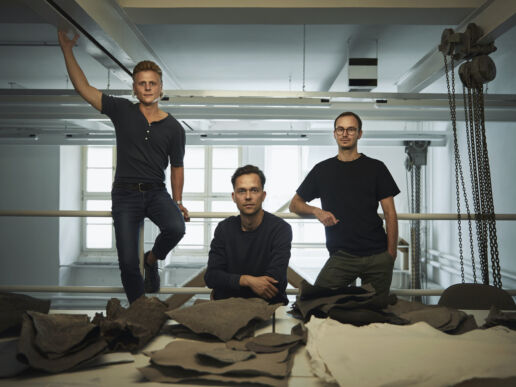
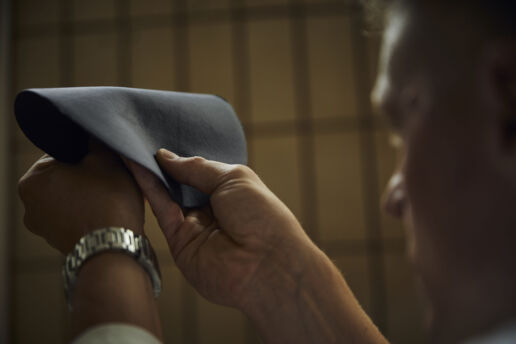
Revoltech is changing the rules of the textile industry with LOVR, a revolutionary material marking the beginning of a sustainable textile revolution. LOVR, based on hemp remnants, is entirely recyclable and biodegradable, with no plastic components. With a minimal ecological footprint, LOVR can be produced carbon-neutral, finding versatile applications in furniture, fashion, and the automotive industry.
Revolutionizing the way materials are made is Revoltech’s mission. Their story began in 2021 as a spin-off from TU Darmstadt, driven by the belief that the textile industry needs a transformation. With LOVR, they make a clear statement for sustainable innovation and a future without compromises.
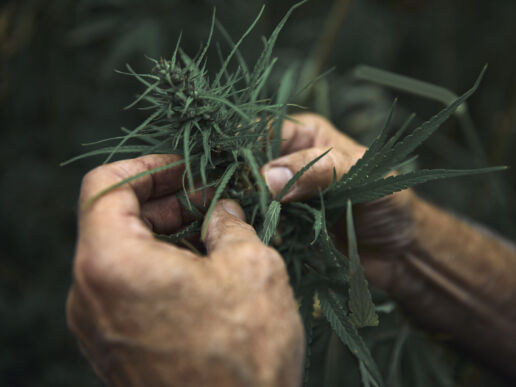

———————————————————————–
THIS MIGHT BE ALSO INTERESTING FOR YOU
BLUEZONE Signature Spring.Summer 25 – Part III
23. April 2024
The aim is to showcase not only the Japanese heritage ofthe ancient hand-stitch technique but also to raise awareness about the significance of repairing and repurposing clothing.
Fabric Trends Spring.Summer 25 – Part VI
18. April 2024
With a rich legacy and a focus on sustainability, they offer a diverse range of ecofriendly fabrics like Modal, Tencel, Linen, Organic and Regenagri Cotton. Their commitment to quality meets the latest fashion trends through innovative designs.
The latest accessory developments for Spring.Summer 25 – Part III
16. April 2024
With new recycled materials and innovative dyeing techniques, they create environmentally friendly designs. Organic polyester gives additional sustainability, while customised designs emphasise personal style.
A Life As An Art Project - Sustainable Innovations
To artist Sophie Conroy, her life is an experiment. In her latest work, she chose to live without her own house for 6 months in Eindhoven, on a quest to find more connected ways of living. During this time, she experienced living amidst chaos and connection. She found various forms of shelter and witnessed the beauty of her community. Through observing her fundamental human needs, she aims to grasp their authentic essence. Embracing the discomfort of houselessness allowed her to uncover valuable insights, challenging traditional notions of art, ownership, and community.
Textiles, for Sophie, become a medium that provides protection while revealing the vulnerability of the self. Confronting existential challenges during her houselessness, textiles transform into symbols of resilience and self-discovery.
Sophie crafts her textiles using primarily found materials, notably her own clothing. She believes in the power of textiles as a communication tool, using them to capture the essence of community and home. She peels away the capitalist consumer dimension of fabric, recognising it as a fundamental connection between body and environment.
Sophie Conroy doesn’t just create artworks; she constructs spaces for dialogue and interaction. Her installations incorporate videos, tapestries, drawings, writing and projections, creating a captivating fusion of textiles and visual art. The space and Sophie herself become part of the art, inviting observers to immerse themselves in this interactive environment.
Sophie emphasises that our focus should not be on designing more ‘stuff’ but on creating new perspectives and ways of seeing. Through creating tools to shift our perspectives, Sophie believes we can move away from the current patterns of exploitation, isolation, and consumption and towards societies grounded in trust, joy, and connection.
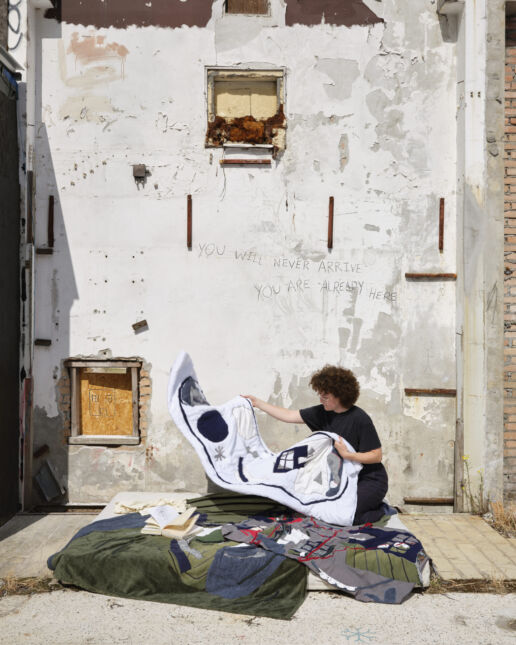
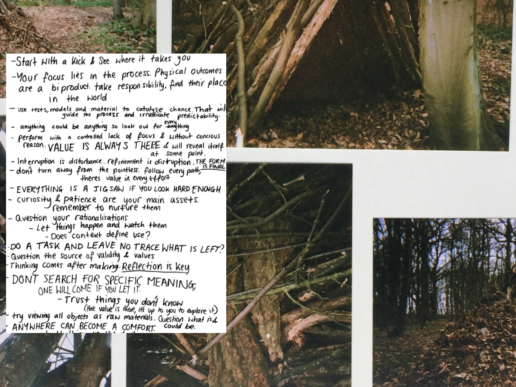

———————————————————————–
THIS MIGHT ALSO BE INTERESTING FOR YOU
BLUEZONE Signature Spring.Summer 25 – Part III
23. April 2024
The aim is to showcase not only the Japanese heritage ofthe ancient hand-stitch technique but also to raise awareness about the significance of repairing and repurposing clothing.
Fabric Trends Spring.Summer 25 – Part VI
18. April 2024
With a rich legacy and a focus on sustainability, they offer a diverse range of ecofriendly fabrics like Modal, Tencel, Linen, Organic and Regenagri Cotton. Their commitment to quality meets the latest fashion trends through innovative designs.
The latest accessory developments for Spring.Summer 25 – Part III
16. April 2024
With new recycled materials and innovative dyeing techniques, they create environmentally friendly designs. Organic polyester gives additional sustainability, while customised designs emphasise personal style.
CLOUDWOOL - Sustainable Innovations
Cloudwool, presented by Martin Brambley, is an oasis of sustainability in the textile universe, introducing pure, local wool of new quality to the market. The projects name symbolises not just an island in the sky but also the unity of environmentally conscious production and high-quality materials.
In a time where natural wool is often imported and blended with synthetic fibers, Cloudwool relies on local resources and fights against the neglect of local sheep farmers’ wool. The sustainable angle of Cloudwool emerges from the desire to bring local fibers to the market in new and exciting forms. The 100% local wool, typically considered waste, is transformed into a super-soft and durable fabric through nonwoven technology – without burdening the environment. Natural, breathable, and comfortable, Cloudwool integrates the natural properties of wool into the material to make it as exceptional as possible.
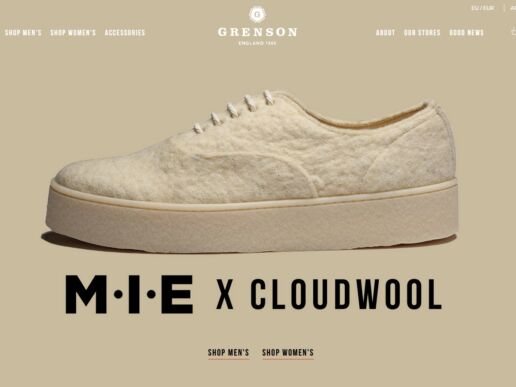
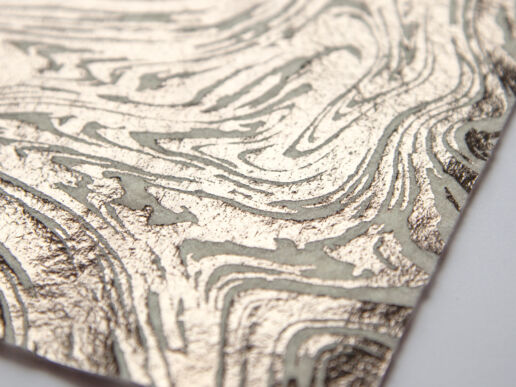
From farm to fabric, Cloudwool relies on local resources, creating a traceable supply chain in collaboration with European sheep farmers. The company pays farmers up to 5 times more than the market price for their wool and produces Cloudwool locally using energy-efficient processes. Together with Cloudwool, you’re not just shaping clothing but also reshaping silhouettes and textures. This isn’t just ordinary wool fabric – with more personality and far fewer post-processing possibilities, the potential is endless.
Doppelhaus, the company behind Cloudwool, was founded by Martin Brambley and Yolanda Leask. In a world where sustainable fashion must be affordable, they are committed to creating sustainable materials for a circular, low-carbon fashion industry of the future. Their innovative approach utilizes efficient nonwoven textile production techniques in line with Cradle-to-Cradle principles.
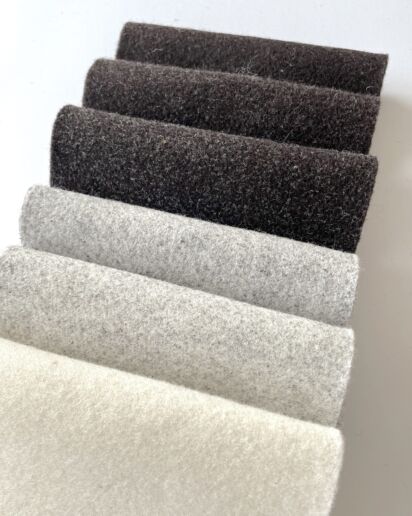
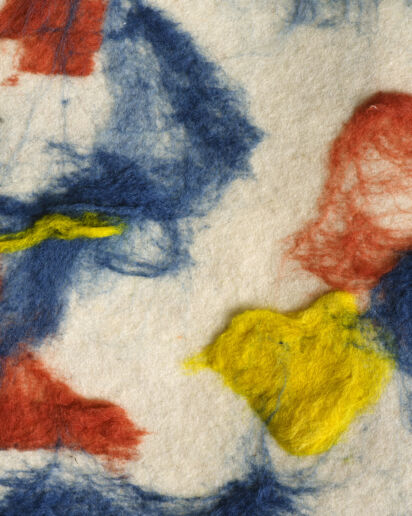
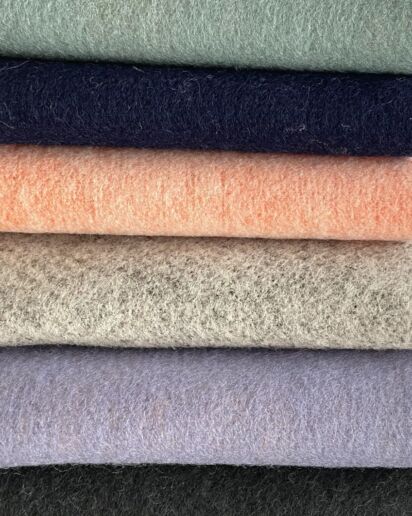
———————————————————————–
THIS MIGHT BE ALSO INTERESTING FOR YOU
BLUEZONE Signature Spring.Summer 25 – Part III
23. April 2024
The aim is to showcase not only the Japanese heritage ofthe ancient hand-stitch technique but also to raise awareness about the significance of repairing and repurposing clothing.
Fabric Trends Spring.Summer 25 – Part VI
18. April 2024
With a rich legacy and a focus on sustainability, they offer a diverse range of ecofriendly fabrics like Modal, Tencel, Linen, Organic and Regenagri Cotton. Their commitment to quality meets the latest fashion trends through innovative designs.
The latest accessory developments for Spring.Summer 25 – Part III
16. April 2024
With new recycled materials and innovative dyeing techniques, they create environmentally friendly designs. Organic polyester gives additional sustainability, while customised designs emphasise personal style.
CO2 Tex - Sustainable innovations
Within the BIOTEXFUTURE cluster, the CO2Tex project introduces innovative paths for sustainable elastic yarns. In the context of the overarching BIOTEXTFUTURE project, the Institute for Textile Technology (ITA) and the Chair for Technology and Organizational Sociology (STO) at RWTH Aachen, together with adidas, strive to achieve the transition of the entire textile value chain to bio-based materials.
CO2Tex stands out as a central project within BIOTEXFUTURE, focusing on CO2-containing thermoplastic polyurethane (TPU) as an alternative to conventional elastane. This project revolutionizes elastic yarn production by eliminating toxic solvents, not only reducing environmental impact but also enabling potential industrial mass production.
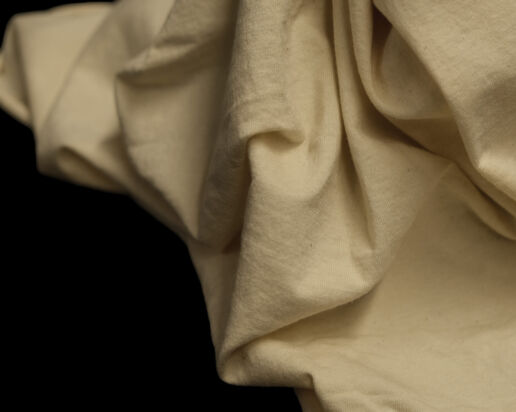
The overarching BIOTEXFUTURE project, led by ITA, STO, and adidas, aims for a swift translation of fundamental research into practical applications. Traditional textiles are to be replaced by sustainable, biobased materials, with CO2Tex playing a pivotal role by demonstrating advancements in the development of commercially viable elastic filament yarns from CO2-containing TPU.
CO2Tex’s goal by October 2024 is to establish these environmentally friendly yarns on an industrial scale, replacing conventional elastane. The project not only focuses on technological advancements but positions itself as a pioneer for sustainable development across the textile industry. By integrating CO2Tex into BIOTEXFUTURE, the vision of an eco-friendly and bio-based future in the textile industry takes a significant step forward.
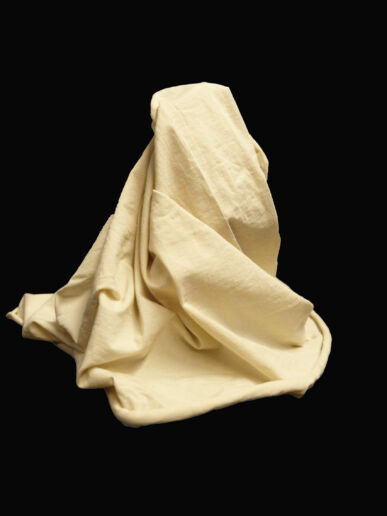
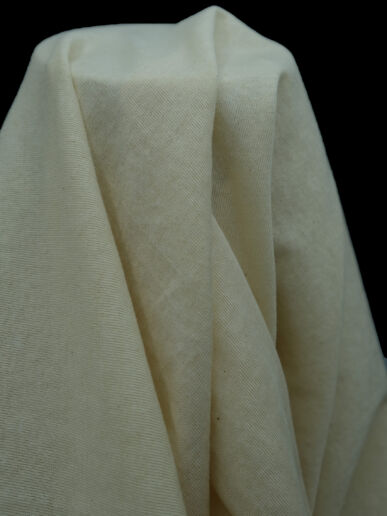
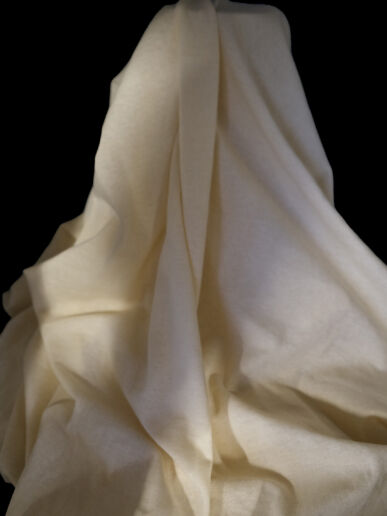
———————————————————————–
THIS MIGHT BE ALSO INTERESTING FOR YOU
BLUEZONE Signature Spring.Summer 25 – Part III
23. April 2024
The aim is to showcase not only the Japanese heritage ofthe ancient hand-stitch technique but also to raise awareness about the significance of repairing and repurposing clothing.
Fabric Trends Spring.Summer 25 – Part VI
18. April 2024
With a rich legacy and a focus on sustainability, they offer a diverse range of ecofriendly fabrics like Modal, Tencel, Linen, Organic and Regenagri Cotton. Their commitment to quality meets the latest fashion trends through innovative designs.
The latest accessory developments for Spring.Summer 25 – Part III
16. April 2024
With new recycled materials and innovative dyeing techniques, they create environmentally friendly designs. Organic polyester gives additional sustainability, while customised designs emphasise personal style.
ReSOURCE - Autumn.Winter 24/25
ReSOURCE is the sourcing platform for environmentally friendly and responsibly produced textiles, apparel and accessories. Search, discover and source – all in one place. Order sustainable materials online at any time on www.resource-textiles.com
With around 700 samples, the area for innovative fabrics and additionals that are bio-certified, bio-based, recycled, recyclable or from regenerative sources has once again grown significantly compared to previous seasons.
It’s the bio-based alternatives, eco-friendly finishes, recycled materials and innovative dyeing techniques using natural resources like coffee grounds that make the latest ingredients and accessories so forward-thinking. We’re featuring Spring.Summer 24 developments from some of our ReSOURCE exhibitors that you won’t want to miss:
REGENAGRI
regenagri is a regenerative agriculture initiative addressing the issues of soil health and the climate and biodiversity crisis. 100% regenagri CO.
- Categories: Organic/Natural
- Composition: 100% Cotton
- Certifications: ISO 14001, regenagri Content Standard, STANDARD 100 by Oeko-Tex®
- Applications: Active Wear, Cotton Fabrics, Jersey Fabrics
- Supplier: ÖZEN MENSUCAT
————————————————————————–
InResST
InResST® Recycled Nylon is made from ghost fishing nets.
- Categories: Recycled, Regenerated Celulosics
- Composition: 70% ECOVERO™, 30% InResST® Recycled Nylon
- Certifications: FSC, GRS, ISO 14001, STANDARD 100 by Oeko-Tex®
- Applications: Active Wear, Jacquard, Jersey Fabrics, Lenzing™ Technologies, Recycled Textiles, Regenerative Textiles
- Supplier: ÖZEN MENSUCAT
————————————————————————–
REFIT
REFIT is a high-end, eco-friendly, uncoated paper. It includes 40% post-consumer recycled waste topped up with 15% wool fibers. It is 100% recyclable and biodegradable.
- Categories: Recycled, Regenerated Celulosics
- Composition: 40% Paper, 40% rec Paper, 20% Cellulose
- Certifications: FSC
- Applications: Accessoires, Cellulose, Membrane, Labels, Labels, Recycled Textiles
- Supplier: TEXCART S.R.L.
————————————————————————–
DESSERTO
Desserto is a cactus- based biomaterial as an alternative to leather.
- Categories: Leather & Alternatives
- Composition: 65% Biobased content, 15% Cotton, 20% Polyester
- Certifications: STANDARD 100 by Oeko-Tex®
- Applications: Accessoires, Labels, Hangtags, Labels
- Supplier: Redmark
————————————————————————–
MONO MATARIAL HANG-TAGS
FSC rec paper hangtags + FSC mix paper strings, simplifying waste sorting.
- Categories: Recycled, Regenerated Celulosics
- Composition: 100% rec Paper, 100% Paper
- Certifications: FSC
- Applications: Labels, Hangtags
- Supplier: STUDIO 9 DENMARK A/S
————————————————————————–
ALGADYE
Algae-based dye is fully biodegradable and can be applied to various fabrics. Made from our patented, award-winning formulation, ALGADYE™ is best used for large-scale dyeing and surfaces, so you can make a large-scale sustainable impact. ALGADYE™ contains algae’s botanical properties that offer skincare benefits to those who wear it.
- Categories: Innovative Alternatives, Pollution free
- Composition: 87% Nylon, 13% Elastane
- Certifications: Bluesign
- Applications: Eco Finish
- Supplier: ALGAEING
————————————————————————–
FALMOUTH
100% Regenerative Cotton. Regenerative Cotton is a revolutionary method of cultivating cotton which seeks to upturn the environmental effects of industrial farming.
- Categories: Regenerated Celulosics
- Composition: 100% Cotton
- Certifications: regenagri Content Standard
- Applications: Cotton Fabrics, Regenerative Textiles
- Supplier: SÖKTAS TEKSTIL A.S
————————————————————————–
ALGADYE
Algae-based dye is fully biodegradable and can be applied to various fabrics. Made from our patented, award-winning formulation, ALGADYE™ is best used for large-scale dyeing and surfaces, so you can make a large-scale sustainable impact. ALGADYE™ contains algae’s botanical
- Categories: Innovative Alternatives, Pollution free
- Composition: 18% Elastane-Spandex, 72% rec Nylon
- Certifications: Bluesign
- Applications: Eco Finish
- Supplier: ALGAEING
————————————————————————–
NEXT SHOW
23/01 – 25/01/2024
HALL 2 | MOC Munich
A cultural heritage - Sustainable Innovations
Flax was traditionally grown as a crop in the Netherlands, and Dutch linen was one of the most sought-after for a long time because of its good quality. Today that is no longer the case. Therefore, in 2018, Crafts Council Nederland, in cooperation with the Fashion Design Master of ArtEZ University, initiated ‘The Linen Project’ to revive the economic viability of local flax cultivation and linen production in the Netherlands, while transforming it in a sustainable way.
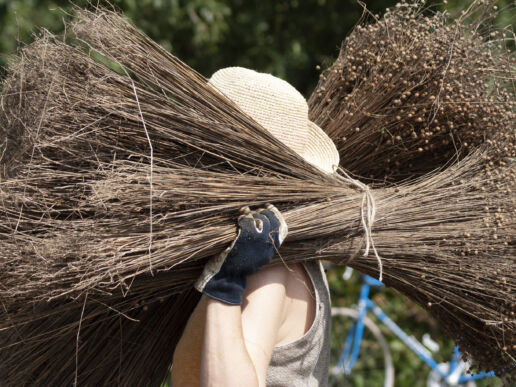
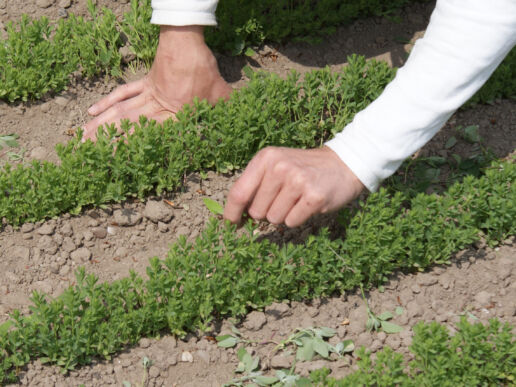
The Linen Project aims to change and challenge thinking in a multidisciplinary way across fields and sectors – agriculture, history, heritage, (landscape)
architecture, fashion, food, crafts, design, contemporary art, economics, innovative business. After all, the whole world is changing. On the one hand, people are more digitally connected to each other than ever before. But at the same time, there is a growing interest in connecting to the products we use and consume every day and how they are made. How and where are our roots? How can we reconnect with deep human values and ancient knowledge and skills? The Linen Project explores the tradition of linen production in the Netherlands and drives the exchange of different values, knowledge, skills and competences across industry boundaries.
Learning by doing is the motto of the project: prototypes of new economic, social and cultural ecosystems are created in a dynamic environment, demonstrating the vital importance of (biological) diversity. The production process involves only four steps – the flax from 2019, for example, was grown on the Lingehof near Arnhem (NL), mechanically processed by Van de Bilt Zaden en Vlas in Sluiskil (NL), spun in Poland and woven into linen by Enschede Textielstad in Enschede (NL). In the process, “old” knowledge meets new technologies, so that future production is based on and builds on a restored connection between people and nature.
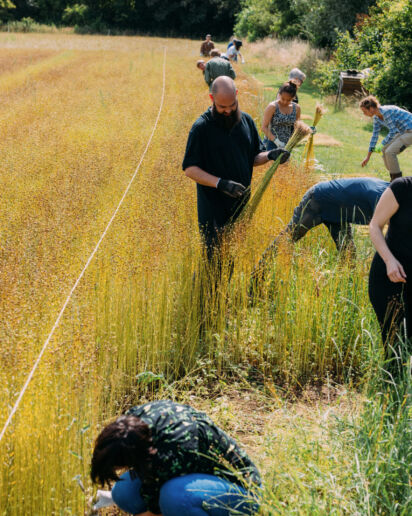
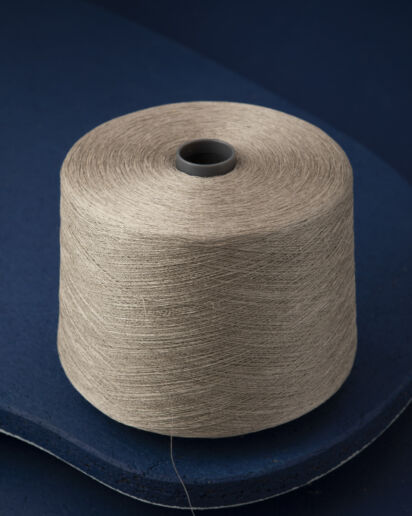
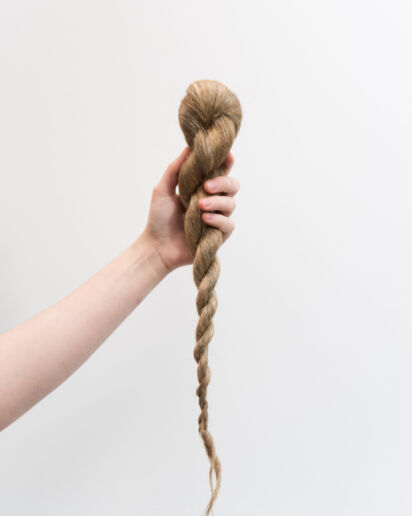
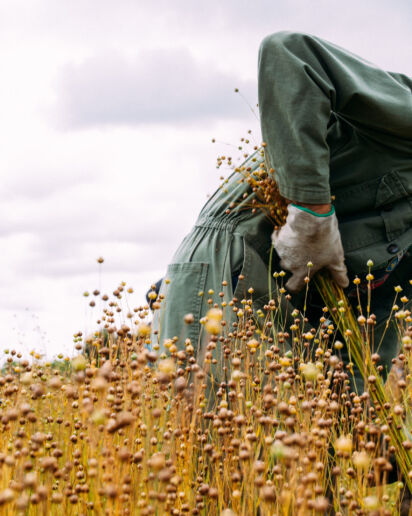
“The Linen Project is our collaborative effort to understand the making of local textiles and experience the beauty of it. This is a shared journey where we, learning by doing, rediscover our relationship with nature and each other.”
WILLEMIEN IPPEL, CO-FOUNDER CRAFTS COUNCIL NEDERLAND
———————————————————————–
THIS ALSO MIGHT BE INTERESTING FOR YOU
BLUEZONE Signature Spring.Summer 25 – Part III
23. April 2024
The aim is to showcase not only the Japanese heritage ofthe ancient hand-stitch technique but also to raise awareness about the significance of repairing and repurposing clothing.
Fabric Trends Spring.Summer 25 – Part VI
18. April 2024
With a rich legacy and a focus on sustainability, they offer a diverse range of ecofriendly fabrics like Modal, Tencel, Linen, Organic and Regenagri Cotton. Their commitment to quality meets the latest fashion trends through innovative designs.
The latest accessory developments for Spring.Summer 25 – Part III
16. April 2024
With new recycled materials and innovative dyeing techniques, they create environmentally friendly designs. Organic polyester gives additional sustainability, while customised designs emphasise personal style.


